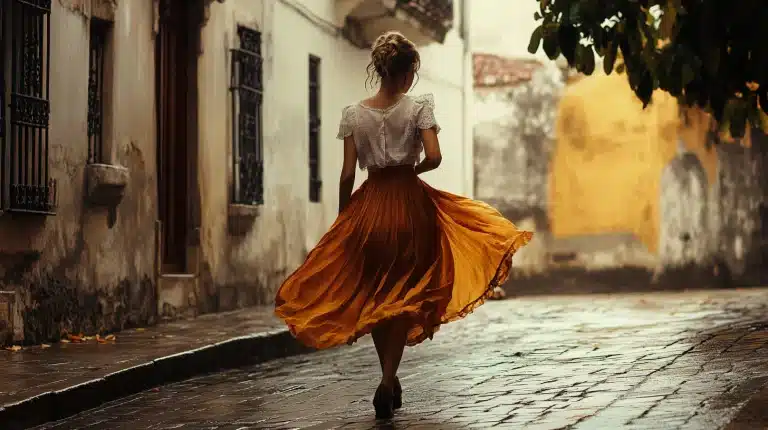Top Films to Watch at This Very Moment
What are those definitive masterpieces in movie production that continue to dazzle and delight many years after they first came out and deviate everyone from gambling with bonus codes?
1. La Dolce Vita (1960)
Made in the middle of Italy’s boom years, Federico Fellini’s runaway box-office hit came to define heated glamour and celebrity culture for the entire planet. It also made Marcello Mastroianni a star; here, he plays a gossip journalist caught up in the frenzied, freewheeling world of Roman nightlife.
Ironically, the movie’s portrayal of this milieu as vapid and soul-corroding hedonistic appears to have passed many viewers by. Perhaps that’s because Fellini films everything with so much cinematic verve and wit that it’s often hard not to get caught up in the delirious happenings onscreen.
So much of how we view fame still dates back to this film; it even gave us the word paparazzi.
2. Seven Samurai (1954)
It’s the easiest 207 minutes of cinema you’ll ever sit through. On the simplest of frameworks—a poor farming community pools its resources to hire samurai to protect them from the brutal bandits who steal its harvest—Akira Kurosawa mounts a finely drawn epic, by turns absorbing, funny, and exciting.
Of course, the action sequences stir the blood—the showdown in the rain is unforgettable—but this is a study of human strengths and foibles. Toshiro Mifune is superb as the half-crazed self-styled samurai, but it’s Takashi Shimura’s Yoda-like leader who gives the film its emotional center.
Since replayed in the Wild West (The Magnificent Seven), in space (Battle Beyond the Stars), and even with animated insects (A Bug’s Life), the original still reigns supreme.
3. In the Mood for Love (2000)
Can a film be an instant classic? Anyone who watched In The Mood for Love when it was released in 2000 may have said yes. The second this love story opens, you sense you are in the hands of a master.
Wong Kar-wai guides us through the narrow streets and stairs of ’60s Hong Kong and into the lives of two neighbors (Maggie Cheung and Tony Leung) who discover their spouses are having an affair.
As they imagine—and partly reenact—how their partners might be behaving, they fall for each other while remaining determined to respect their wedding vows.
Loaded with longing, the film benefits from no less than three cinematographers, who together create an intense sense of intimacy, while the faultless performances shiver with sexual tension. This is cinema.
4. There Will Be Blood (2007)
On the road to becoming the most significant filmmaker of the last 20 years, Paul Thomas Anderson transformed from a Scorsesian chronicler of debauched LA. life into a hard-nosed investigator of the American confidence man.
The pivotal point was There Will Be Blood, an epic about a certain kind of hustler—the oil baron and prospector. Daniel Plainview is, in the final analysis, an ultra-scary Daniel Day-Lewis who will drink your milkshake.
Scored by Radiohead’s Jonny Greenwood (himself emerging as a major composer), Anderson’s mournful epic is the true heir to Chinatown’s bone-deep cynicism.
As Phantom Thread makes clear, Anderson hasn’t lost his sense of humor, not by a long shot. But there once was a moment when he needed to get serious, and this is it.
5. Bicycle Thieves (1948)
Vittorio de Sica’s Neorealism masterpiece is set in a world where owning a bicycle is the key to working, but it could just as easily be set in one where the absence of a car, affordable childcare, or a home, or social security number are insurmountable barriers in the constant slog to put food on the table.
That’s what makes simultaneously it a film for postwar Italy and modern-day anywhere-at-all. That’s what makes it such a powerful, enduring landmark in humanist cinema.
You can feel it in virtually every social drama you care to mention, from Ken Loach to Kelly Reichardt.
6. The Dark Knight (2008)
There’s a new Batman in Gotham, in the shadowy form of Matt Reeves’s The Batman – and this is the bar it has to clear.
The middle entry in Christopher Nolan’s Bat-trilogy is an almost flawless case study of how to do a sophisticated superhero epic for modern audiences – and the ‘almost’ is only because the final act refreshingly tries to cram in almost too many ideas, much moral arithmetic.
Heath Ledger’s Joker, meanwhile, redefines big-screen villainy: It’s not enough to be sinister, you need a party trick now too.







